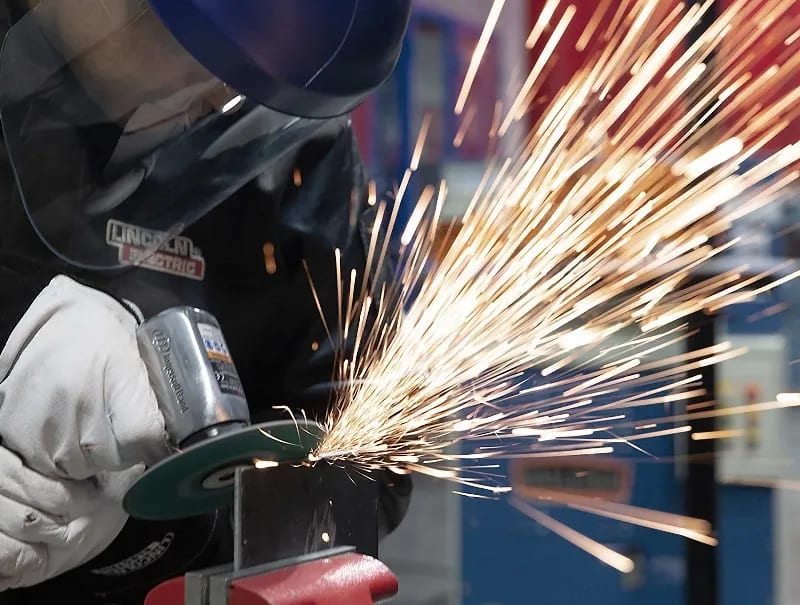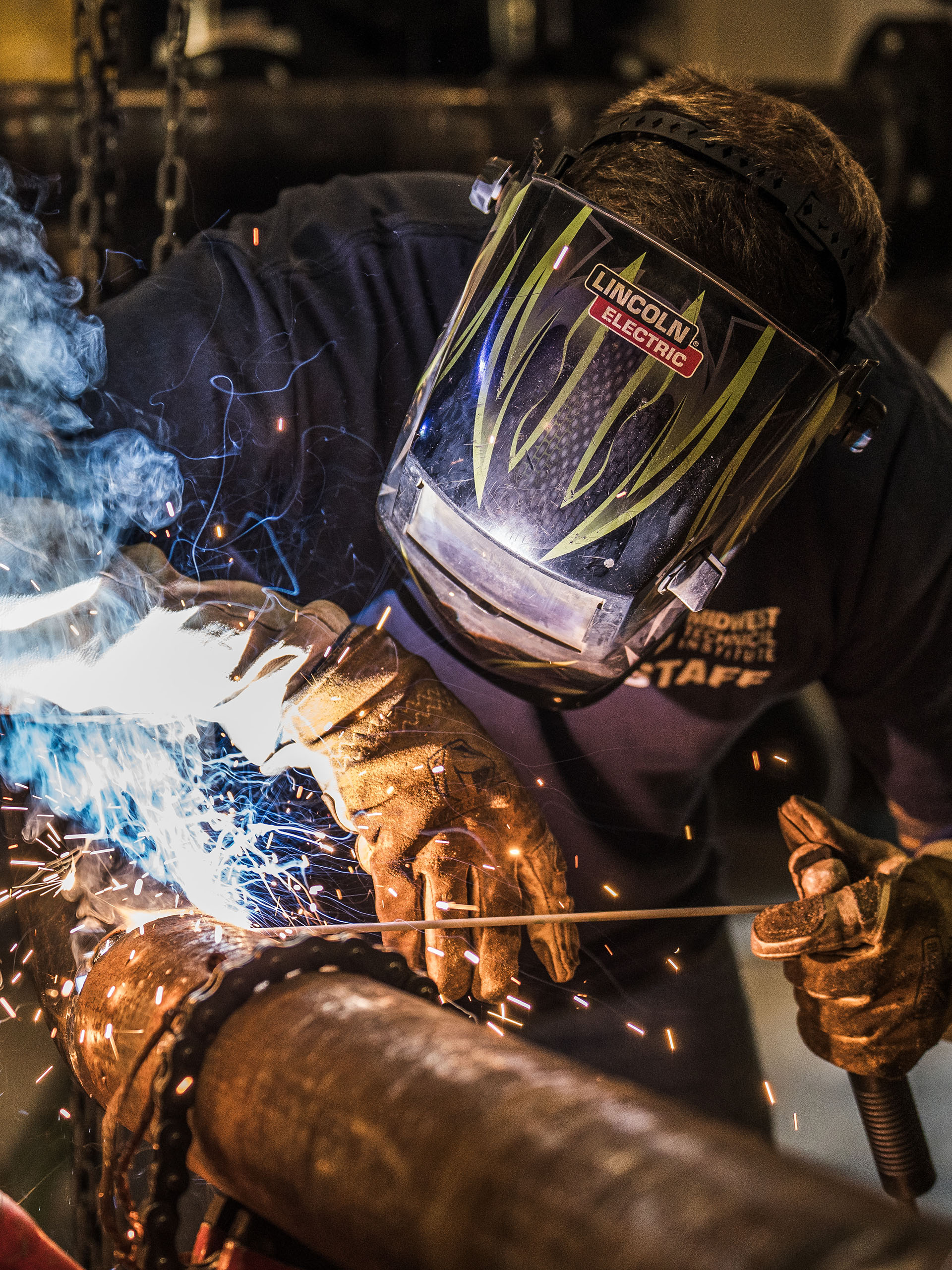All Concerning Welding: Secret Insights Into Techniques and Best Practices for Success
Welding encompasses a range of methods, each fit for details products and applications. Understanding these approaches, such as GMAW, SMAW, and TIG, is crucial for accomplishing suitable outcomes. The right devices and safety methods can not be neglected. As preparation and troubleshooting play critical functions in the welding procedure, understanding these elements can substantially boost the quality of the end product. What are the crucial elements that assure an effective weld?
Understanding Different Welding Methods
Welding methods encompass a selection of methods, each suited to specific applications and products. Amongst the most common strategies are Gas Metal Arc Welding (GMAW), Shielded Steel Arc Welding (SMAW), and Tungsten Inert Gas Welding (TIG) GMAW, also understood as MIG welding, is preferred for its rate and adaptability, making it perfect for thin materials. SMAW, or stick welding, is favored for its simplicity and performance in exterior settings, especially with thicker steels. TIG welding uses precision and control, making it ideal for detailed job and non-ferrous steels (Belgrade Welding). Each method has its special advantages and considerations, enabling welders to select the best approach based upon the project's needs, material kind, and preferred results. Recognizing these strategies is essential for successful welding
Vital Welding Tools and Tools
While numerous welding strategies need specific skills, the appropriate tools and tools are just as essential for achieving quality outcomes. Essential welding devices consists of welding machines, which differ depending upon the technique-- such as MIG, TIG, or stick welding. Protective gear, consisting of gloves, helmets, and aprons, assurances safety and security and convenience during the process. On top of that, clamps and components assist secure materials in location, making certain accuracy in welds. Consumables like welding rods, wire, and securing gas are also important elements that influence the high quality of the weld. Tools such as cutters and grinders help with surface area preparation and post-weld finishing, adding to an expert result. Purchasing top notch tools eventually boosts the efficiency and efficiency of welding projects.
Security Practices in Welding
Proper safety practices are essential in the welding industry to safeguard workers from possible threats. Welders need to use proper personal protective equipment (PPE), consisting of safety helmets with proper shading, handwear covers, and flame-resistant apparel. Appropriate air flow is crucial to lower exposure to unsafe fumes and gases created during the welding process. Additionally, employees should be learnt the proper handling of welding devices to protect against mishaps. Fire precaution, such as keeping combustible materials away from the welding location and having fire extinguishers easily offered, are required. Regular inspections of equipment and work areas can aid identify potential threats before they cause crashes. By sticking to these security practices, welders can produce a more secure working setting and reduce threats connected with their trade.
Preparing Materials for Welding
Preparing products for welding is an essential step that considerably influences the high quality and honesty of the last product (Montana Mobile Welding and Repair Welding). Proper preparation includes cleansing the surfaces to eliminate contaminants such as oil, corrosion, and dust, which can compromise the weld. Strategies such as grinding, fining sand, or making use of solvents are typically employed to attain a tidy surface. In addition, guaranteeing that the products mesh snugly is important; voids can bring about weak welds. It's likewise crucial to consider the positioning and positioning of the parts, as this will affect the convenience of welding and the final result. Finally, picking the ideal filler product and ensuring compatibility with the base metals is essential for attaining strong, long lasting welds
Tips for Achieving High-Quality Welds
Accomplishing top quality welds requires attention to information and adherence to finest practices throughout the welding procedure. Appropriate joint prep work is essential, making certain surface areas are clean and totally free from contaminants. Selecting the appropriate filler material and welding technique based upon the base metals is vital for perfect bonding. Keeping regular travel rate and angle while welding can prevent issues and promote harmony. Additionally, controlling warm input is crucial; too much warmth can cause bending and weakened joints. If needed, on a regular basis inspecting the welds during the process allows for prompt adjustments. Ultimately, utilizing suitable post-weld treatments, such as cleansing and anxiety alleviation, can boost the toughness and integrity of the weld, eventually making sure an effective end result.
Fixing Common Welding Issues
Welding frequently offers difficulties that can impact the quality and stability of the end product. Usual concerns such as porosity, irregular weld grains, and overheating can develop, each needing certain troubleshooting techniques. Recognizing these problems is vital for welders to enhance their abilities and achieve ideal results.
Porosity Problems Described
Porosity can frequently be overlooked, it remains a crucial concern in welding that can jeopardize the integrity of an ended up item. Porosity refers to the presence of tiny gas pockets within the weld bead, which can deteriorate the joint and lead to premature failing. This trouble normally arises from pollutants, moisture, or inappropriate securing gas protection during the welding process. To reduce porosity, welders need to validate that the base materials are completely dry and clean, use proper shielding gases, and keep regular welding criteria. Frequently evaluating the equipment and setting can likewise assist determine possible problems before they manifest in the weld. Attending to porosity efficiently is crucial for attaining solid, durable welds that fulfill quality requirements.

Irregular Weld Beads
Inconsistent weld grains can significantly influence the high quality and strength of an ended up item. Different aspects contribute to this issue, consisting of improper traveling speed, inaccurate amperage setups, and inconsistent electrode angles. When the welder relocates too promptly, a grain might show up narrow and do not have penetration, while moving too gradually can cause extreme accumulation. Furthermore, using the wrong amperage can lead to either damaging or excessive spatter, both of which concession weld integrity. The welder's technique, such as inconsistent torch movement, can also lead to irregular bead appearance. To mitigate these troubles, welders must concentrate on preserving stable, controlled movements and ensuring appropriate tools settings to accomplish uniformity in their welds. Uniformity is crucial to achieving solid and trusted welds.
Overheating and Bending Issues
Extreme heat throughout the welding procedure can result in considerable overheating and contorting concerns, affecting the structural honesty of the work surface. These troubles commonly materialize as distortion, which can endanger placement and fit-up, making more assembly testing. Elements adding Montana Mobile Welding and Repair Welding to overheating consist of the choice of welding criteria, such as voltage and travel speed, along with the kind of product being bonded. To reduce these problems, welders need to preserve consistent traveling speed and ideal heat input while keeping an eye on the work surface temperature level. In addition, pre-heating or post-weld heat therapy can help minimize tensions brought on by fast air conditioning - Fabrication. Routine examination and adherence to finest methods are necessary in protecting against overheating and guaranteeing the long life and dependability of bonded frameworks
Often Asked Concerns
What Are the Occupation Opportunities in the Welding Sector?
The welding market offers varied job chances, including placements as welders, designers, examiners, and teachers. Specialists can operate in manufacturing, building and construction, aerospace, and auto markets, gaining from strong need and affordable incomes in different functions.
Exactly How Can I Enhance My Welding Rate Without Compromising Quality?
To boost welding rate without compromising quality, one need to practice efficient strategies, preserve tools, maximize settings, and improve hand-eye coordination. Normal training and seeking responses can also considerably add to achieving faster, high-quality welds.
What Accreditations Are Available for Welders?
Many qualifications exist for welders, consisting of those from the American Welding Culture (AWS), the National Facility for Building And Construction Education And Learning and Study (NCCER), and different industry-specific companies. These credentials enhance employability and show skill efficiency.
Just How Does Welding Impact the Features of Metals?
Welding influences the homes of metals by altering their microstructure, which can lead to modifications in toughness, ductility, and hardness. Warm input and cooling rates during the procedure considerably affect these product characteristics.
Can I Weld Dissimilar Metals With Each Other?
